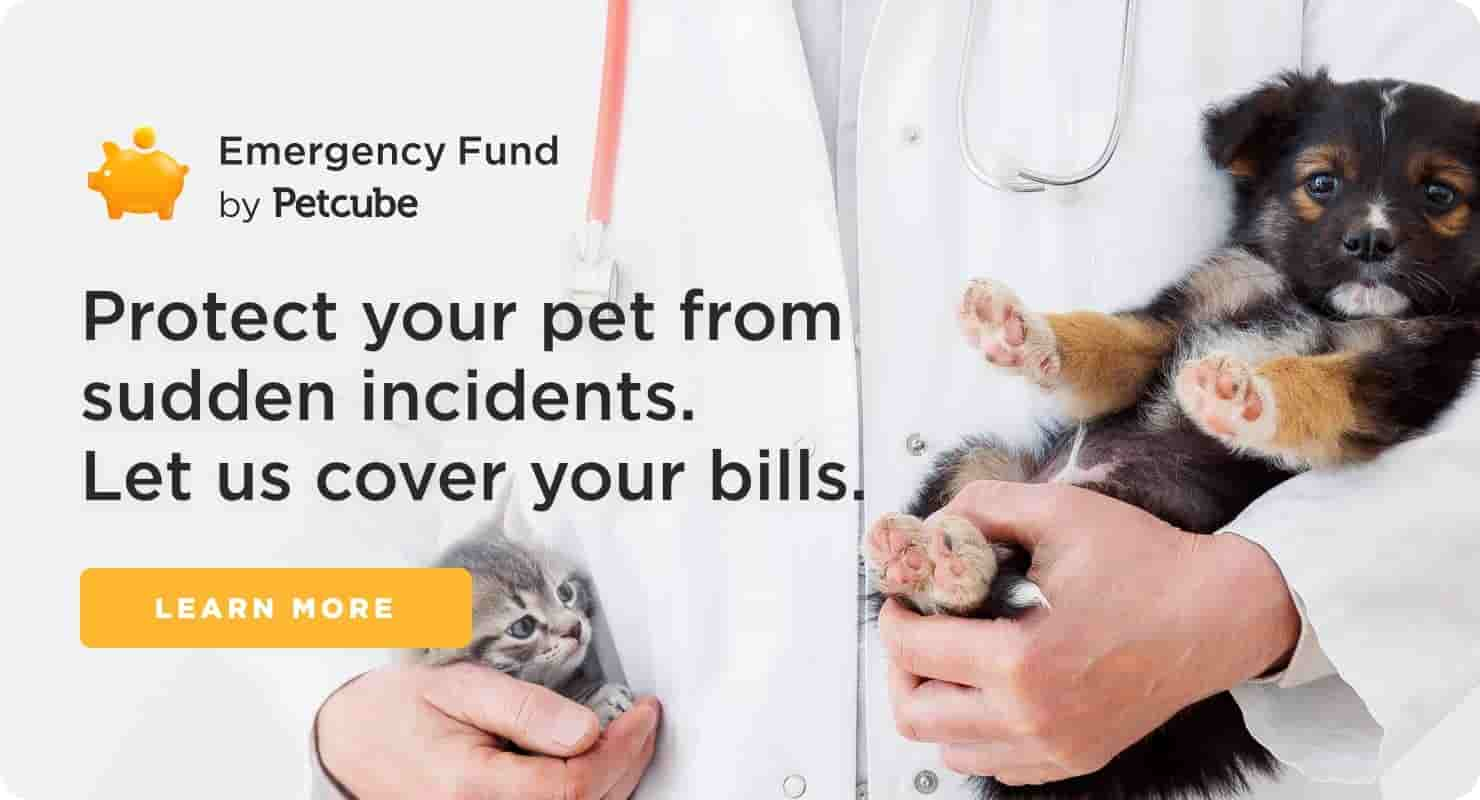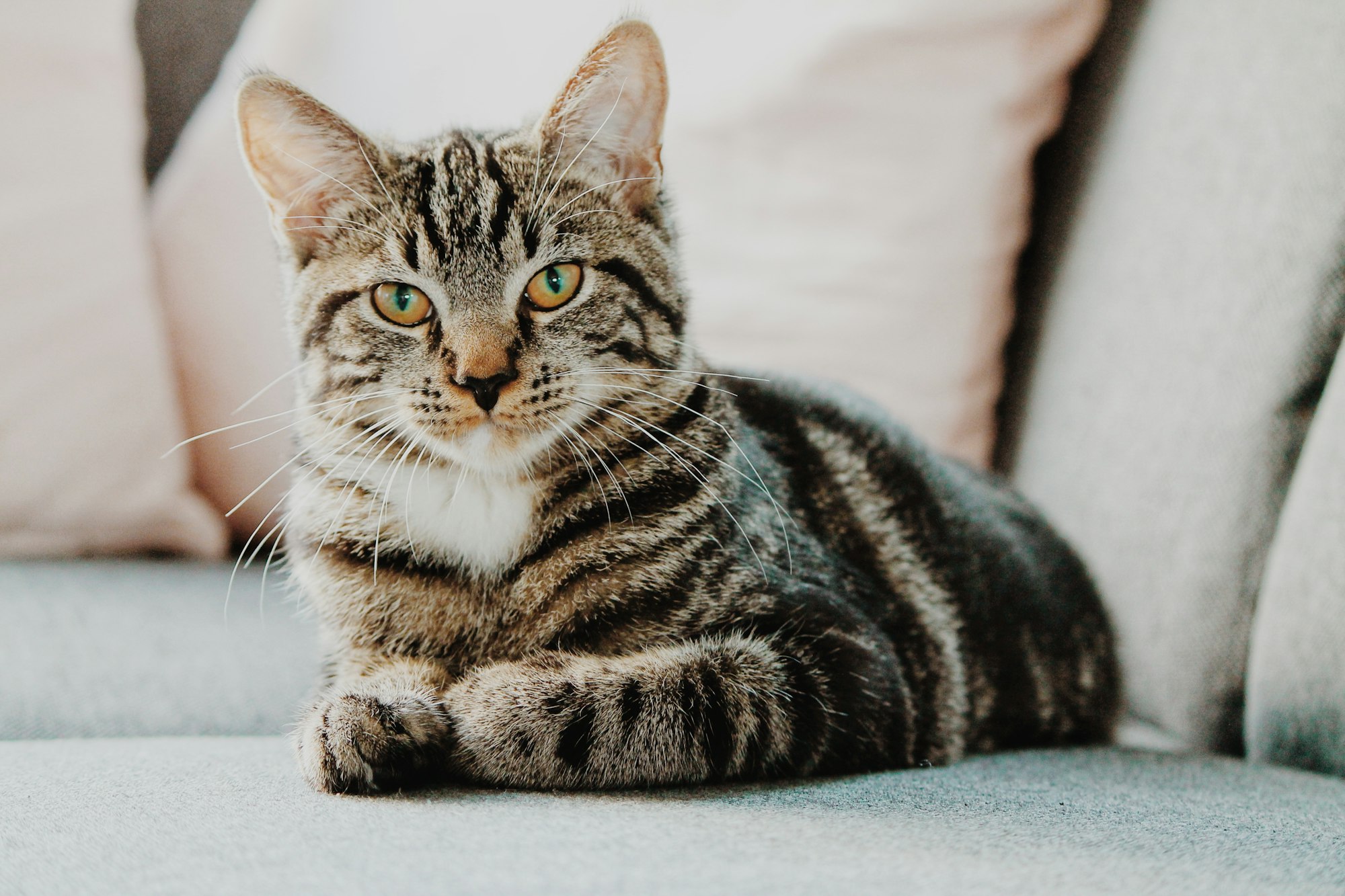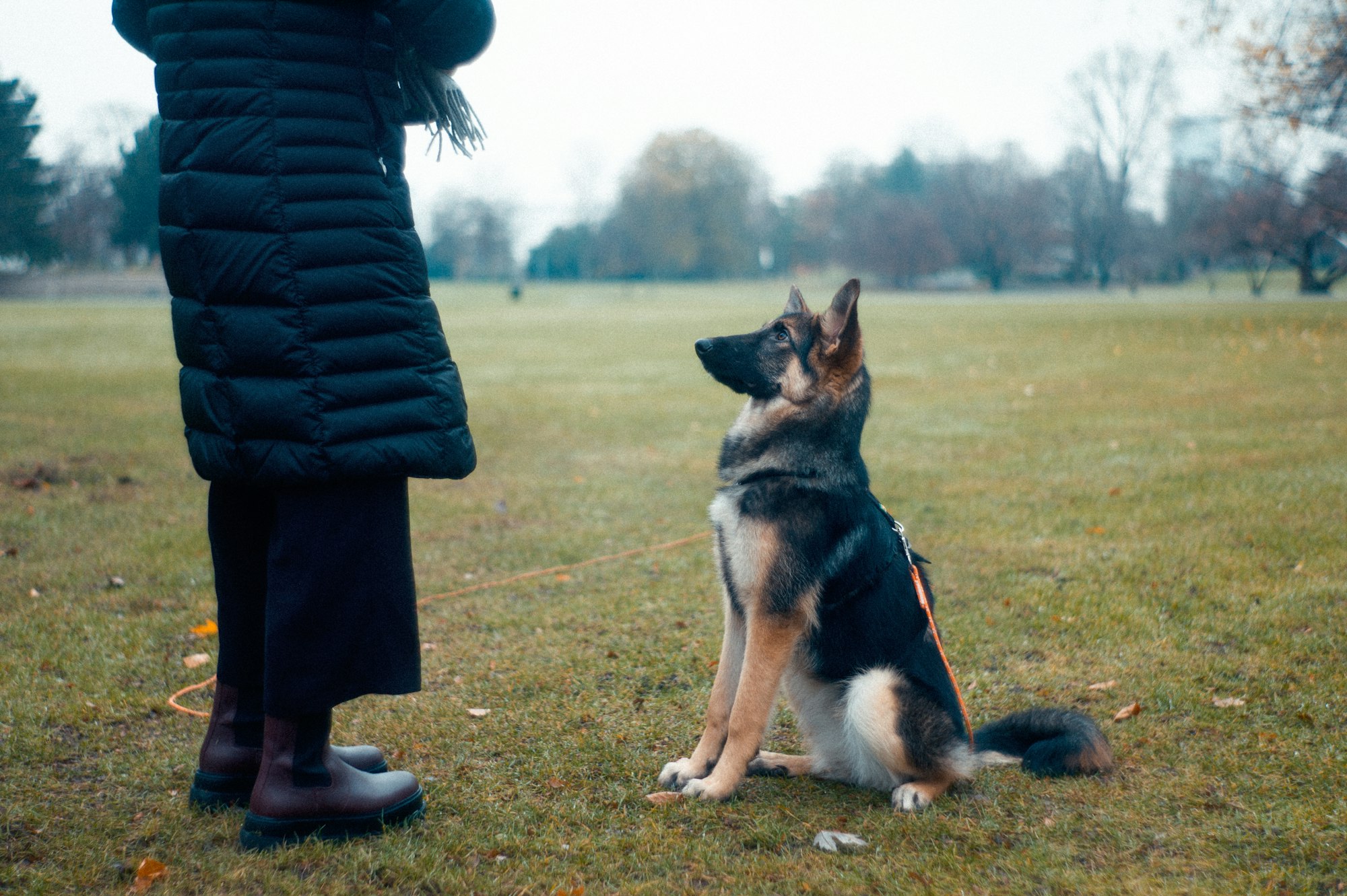One of the most daunting parts of bringing home a new pup is teaching them where to — and most importantly — where not to do their business. If the thought of potty training a puppy fills you with dread, you’re not alone.
The good news is that a little consistency and a generous helping of patience will go a long way to ensure that you start your life together on the right …erm, paw.
It’s so important to not pooh-pooh (pun very much intended) the process of dog potty training. A poorly potty-trained pooch won’t only wreck your carpets and furniture, but your relationship with your pup is also likely to suffer.
What should be a budding friendship can quickly turn into a strained relationship, leading many disillusioned owners to surrender their dogs to local shelters (or abandoning them altogether) out of sheer frustration.
Using the following strategies and tips, you’ll be setting your pup up for potty training success!
Stop Googling - Ask a Real Vet
When to start potty training a puppy?
The short answer? As soon as you bring them home.
Your puppy will be coming from a den environment where their mother will ensure that the den is clean and free of any accidents. Dogs are very clean and don’t like a mess in their living space. They are also creatures of habit, so once an area is soiled, they will associate the smell and the area with toilet habits and continue to go there to relieve themselves.
This is why it’s crucial to clean up any messes pronto. It’s good to remember that dogs are pack animals, and as the pet owner, you’re now the pack leader.
As the new ‘mom’ in the situation, it’s on you to keep things spick and span and smell-free to avoid reinforcing the very behavior you’re trying to prevent.
How long does it take to potty train a puppy?
There’s no one-size-fits-all answer to this question. The age of your puppy will play a big role in the speed at which they adopt new behaviors. Also, don’t overlook your part in the process – your consistency and approach will impact the timeline of dog potty training.
You’ll know that your puppy is potty trained when you can go two to three months without an accident. That said, it isn’t uncommon for young puppies to go through a period of regression at some point in their first year. Regression can also result from big changes in your pooch’s life; things like moving to a new house, the arrival of a baby, or introducing a new pet.
There’s an old song that says you can’t hurry love, and it’s much the same with dog potty training. You don’t want to rush this and risk undermining all your hard work. Keep things consistent with your dog and invest time in the process and you will reap the rewards.
When and how to potty train a puppy?
Pay attention to your dog’s behaviors that will let you know when they’re getting ready to go. If you see them sniffing or circling, those are pretty good signs that something’s about to happen.
When you take your puppy outside to potty, try and take them to the same spot each time — this will most likely become their designated spot. Puppies younger than 6 months should go out every 2 hours or so, and as they get older you can stretch this out to 3 to 5 times a day.
These potty training tips are going to go a long way in setting both you and your pooch up for potty training success.
Create a strict schedule
This is your secret weapon in achieving success when potty training your pup. Set regular times for sleeping, playing, feeding and toilet breaks, so your puppy can learn what the signals are.
- Start every day with a toilet break outside
Do not pass ‘Go’, do not collect $200 (or make coffee or brush your teeth). Head straight outside to the usual spot for your pup to potty.
If your pup starts doing their business before you make it outside, pick them up and rush them to their spot to reinforce their association of where it is okay to potty.
- Take your pup out after meals
Wait for about 20 minutes (keep an eye out for those signs we discussed) and then take your pupper out. The younger the puppy, the sooner they should go out after eating or drinking.
- Potty train your pup after naps and playing
Nap times and playtime and any time spent in the crate (more on this later) should also be followed up with a trip outside. Again, watch for those signs that doggy needs to go so you can preempt any accidents. Prevention is preferred!
- Your last visit outside for the day should always be right before bedtime
Don’t wait too long between toilet breaks
The general rule of thumb is to take your dog’s age in months and add one — this will give you the maximum time in hours that your pup can go between toilet breaks.
For example, your puppy is 6 months old plus one makes seven. This means you should never push it longer than 7 hours between toilet breaks if you wish to avoid a mess.
Adjust the diet if need be
A pup that overeats or is eating food that doesn’t agree with them can develop runny stools which will make your job of house training significantly harder.
Tools to help: crates, pens, and pads
Crates and pens are valuable tools to help you manage your puppy’s new environment, especially during dog potty training. Crate training is also helpful for when you need to travel with them or keep them safe.
We mentioned earlier that dogs live in dens, so they will instinctively look for a safe, secure spot. Once they trust their crate as this kind of a den/safe haven, they will want to keep it clean and free of urine or poop, so they will let you know when they have to go, and then you can hustle them outside.
It’s critical that the crate is neither too small nor too big. Your pup should be able to turn around but not take more than a step or two. Given enough room, a desperate pup will select a corner as the unofficial bathroom, and you don’t want that.
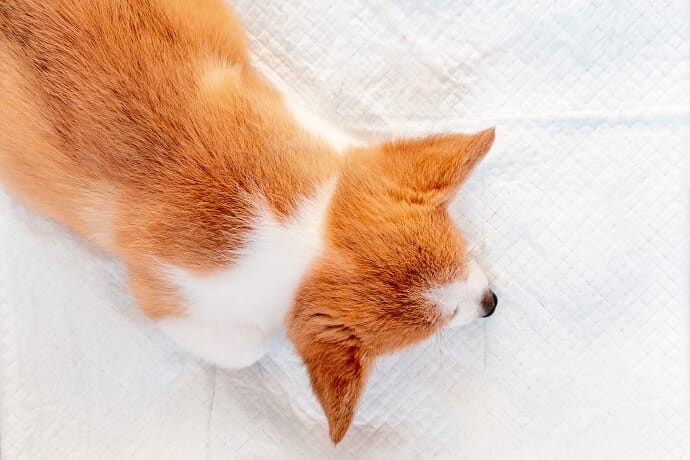
Another super handy, but temporary, tool is a puppy pad or paper. These should be used sparingly and in specific situations as they send a conflicting message to your pooch. You’re trying to teach them to go outside but now you’re offering an indoor alternative and this dilutes your main message.
That said, there are circumstances where they can be useful, for example in areas where the weather prevents you from taking your pup outside, if you live in an apartment, or if you’re are trying to potty train a puppy when you work full time.
The idea then would be to keep your puppy pad or paper in the same spot to encourage that consistent behavior, with the option to move this closer and closer to the door to develop that association.
Praise and reward
Dogs thrive on positive reinforcement — reward the desired behavior to discourage the less desirable. When they get it right by going outside shower them with praise and treats and cuddles and playtime to drive the point home that they did well.
It’s important to note that the same does not work in reverse. If your pup has an accident in the house, scolding them and physically showing them how upset you are won’t cause your puppy to change their behavior at all.
The best approach to indoor mishaps and accidents is to say a firm ‘no’ and take them to the spot outside where you expect them to potty. Guide them to associate outside with going to the toilet and be sure to clean up the mess quickly and thoroughly.
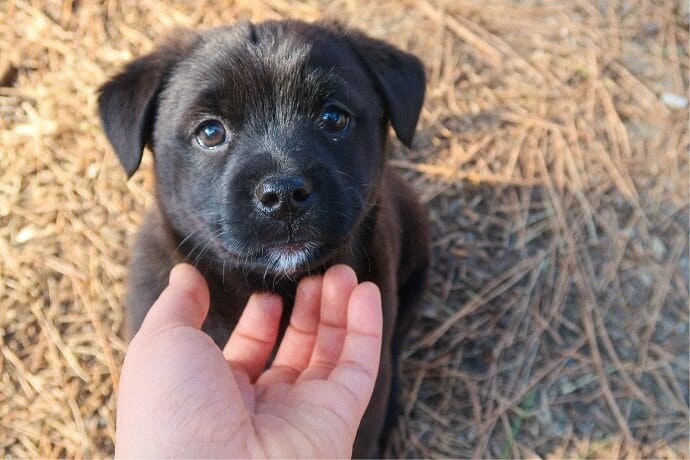
Troubleshooting
What if your pup isn’t responding? How do you potty train a stubborn puppy? The same way you train all puppies! Take a step back and review how you’re approaching the situation. Take it right back to basics and make sure you’re being consistent with their schedule, rewarding them adequately for good behavior, and really focussing on managing the dog’s environment.
Success in potty training your puppy is achievable, and you don’t need to fear the process. It all comes down to consistency and patience.
Using Emergency Fund To Cover Pet's Emergency Needs at an Affordable Price
Petcube has revamped the traditional pet insurance to meet the most common emergency needs at an affordable price. Talk to a vet online any time of the day, get $3,000 in an emergency for up to six pets for $29 per month.
Emergency Fund provides you with 24/7 access to authorized veterinarians, most of whom have more than 10 years of experience. You can ask any questions regarding your pet's wellbeing, including general health, nutrition advice, second opinions, allergies, behavioral questions, or anything else your pet might be encountering
Was this article helpful?
Help us make our articles even better


